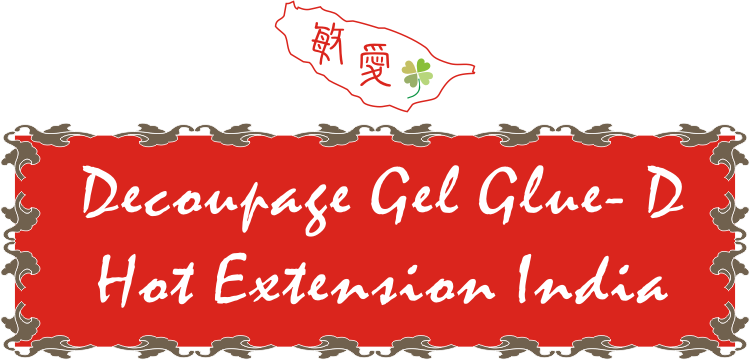
|
 [ Feature and Instruction ] No matter what kind of glue to be used for pasting and it・s possible to face the difficulty on the glue stains at picture edges. It often happens in engraved collage after the complicate picture cutting. The main reason for the problem is that most people usually spread glue on object first, and then continues with the picture pasting, press, glue clean, etc as in order which would bring the incomplete glue clean situation in small spaces. The glue stain is hardly to remove as it will affect the piece of work appearance. We has developed a more simple and efficient technique, on paste process after the two-component adhesive procedure. We welcome all the decoupage aficionados to use the new technique as it will make the work-piece perfect and also keep the leading position at decoupage art field. Smear the product on flat plastic piece equally. Then paste the picture which has not cut precisely (only take the top level of napkins) on the object and compress the picture gently to remove the bubbles. Start to cut the picture after dry, and place on the object. Cover a .plastic release liner・ on top of picture (matted side face toward the picture, the glossy side face to the iron direction). Set the iron on high .cotton setting・ (remember to switch off the steam) and press the picture for over 40 seconds according to the picture size. Just peel the plastic release liner off when the object is cool. If do not want to get scratch on finished object (for example, avoid from water wash, to place outdoor, etc), then can spread a proper amount of protective coating (should not smear on fabric objects), General Purpose Decoupage Gel Glue (as be the protective layer on fabric object surface), etc. on the top of picture. Thin paper vs. thick paper: the thin paper kind means napkins, handkerchiefs, etc. Decoupage paper, copier paper, photograph paper, etc. are so called as thick paper. Front Print vs. Negative Print: Front Print means the pictures with the turned-up direction transfer to flat object (such as hardwood, bamboo, fabric, leather, cardboard, etc.). On the other hand, the Negative Print means to place the picture face down and transfer to flat object (window, China dish, etc.) It・s not suitable to use this product paste on a rough surface object because it will not be able to iron the picture entirely. Also, it cannot be used on object which might get deform by iron with high heat setting. [ Demo Video ] |
|
[ Attention ] :Thermal Transfer Découpage Process; was developed by :MingAi Handiwork Association, Taiwan; in 2010 and used in Découpage courses worldwide. We have the copyright on this process package. All rights are reserved by Taiwan MingAi. Various capacities ranging from 100g to 4kg are available, welcome to purchase. The production date is marked as "MM/DD/YY". |